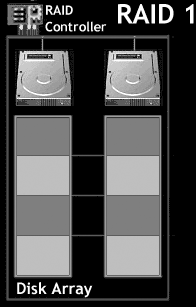There is no speed benefit because of the absence of striping and actually, due to Error Checking/Correction (ECC), write performance can often be slower than what you’d get with just one hard drive. Much of this inefficiency is related to the fact that the mirroring process is often placed on the CPU. It does not matter if it is software or a cheap RAID card, if the mirroring process is not handled by the controller, there may be less performance. Windows users should be wary on account of the ease with which one can implement RAID 1 in software. It will be slower than a dedicated RAID card or even a single hard drive.
The only reason to use RAID 1 is if data integrity is more important than performance. RAID 1 is pretty cheap and very easy to use.
